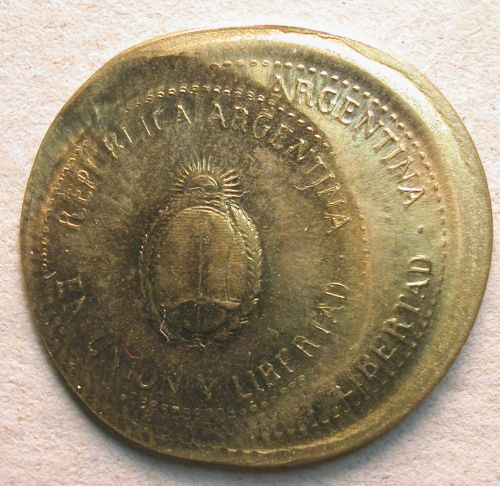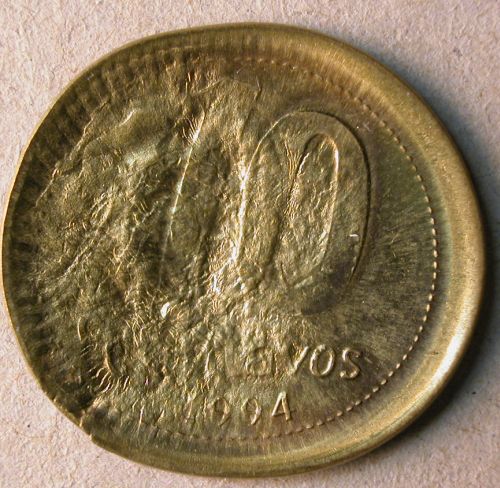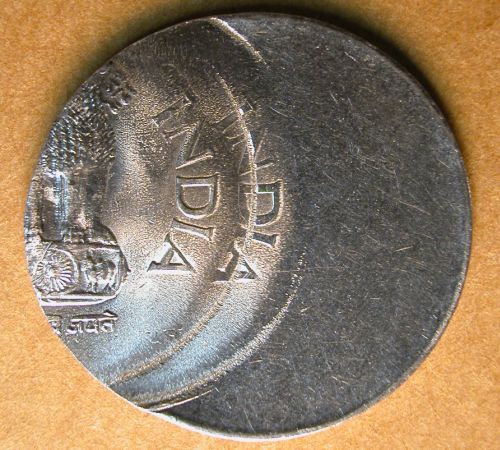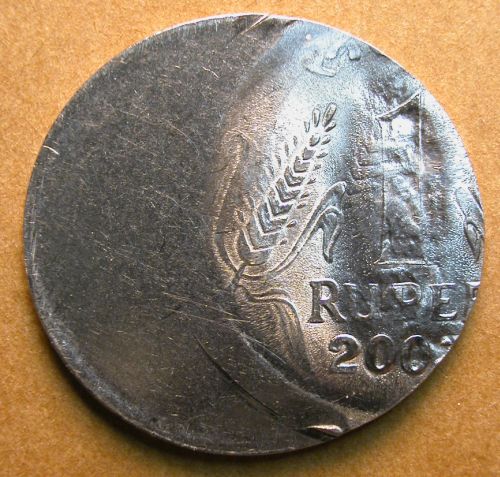Part IV. Striking Errors:
Struck-Through Errors:
Struck Through Floating Encrustation
Definition: A floating encrustation is a piece of compacted die fill or caked-on grime that enters the striking chamber and is struck into a coin. Stiff, caked-on grime can come from the bowels of the press. The lubricated joints and rods are a magnet for dust and dirt. This material can stiffen over time and then break off. Die fill (“grease”) is a compacted layer composed of lubricant, dirt, and metal dust that accumulates on the die face. Pieces can break away to form nondescript struck-through errors. In either case, the resulting struck-through error resembles a conventional “grease strike”.
The impression left behind by a floating encrustation can be expected to show:
- Soft or indistinct margins
- Variable depth (reflecting variable thickness of the foreign material)
- Variable topography (potentially smooth to rough)
- Occasional gaps or thin areas that allow the design to emerge.
There are only two practical ways to distinguish a floating encrustation impression from a grease strike:
- Assemble a progression (defined by die markers) that shows the sudden appearance of a struck-through area.
- Find a double-struck coin in which the first strike is unobstructed and the second strike is partly or fully obstructed.
This broadstruck 1994 Argentina 10 centavos shows an unobstructed first strike. The second strike was almost fully obstructed on the reverse face by what seems to have been a floating encrustation. The reverse face was struck by the hammer die. First-strike elements are flattened, but retain sharp margins. The only second-strike element to emerge is the C of CENTAVOS. The irregular texture and indistinct margins of the struck-through area are consistent with a floating encrustation.
This double-struck 2003 India 1 rupee coin shows an unobstructed first strike. The second strike was fully obstructed on the reverse face, which was struck by the anvil die. The minimal flattening of the first-strike elements and the variable depth and topography of the impression are inconsistent with a uniface strike against another steel 1 rupee planchet. I suspect a dollop of stiff grime entered the striking chamber and somehow found itself between the anvil die and the off-center coin on top. The subsequent strike flattened the crud deposit into a disc-like shape.



